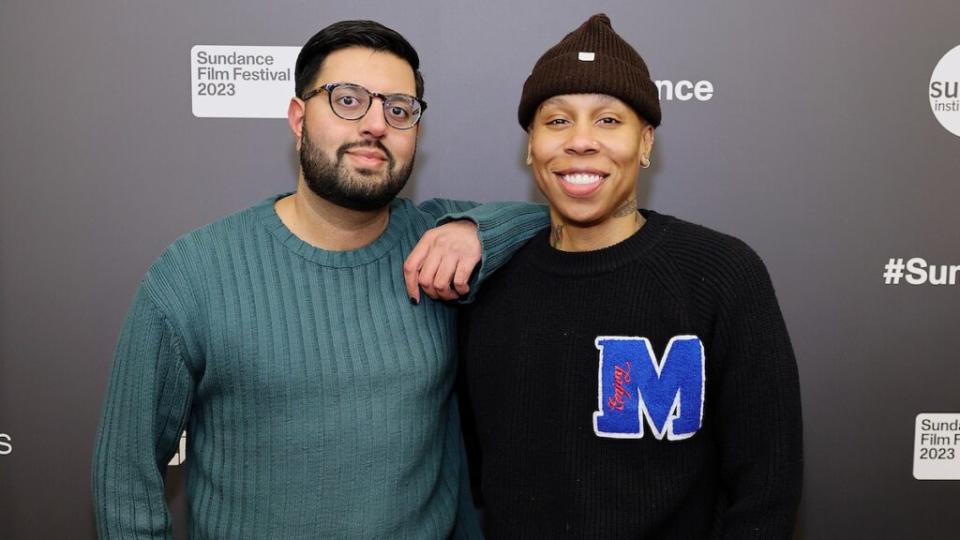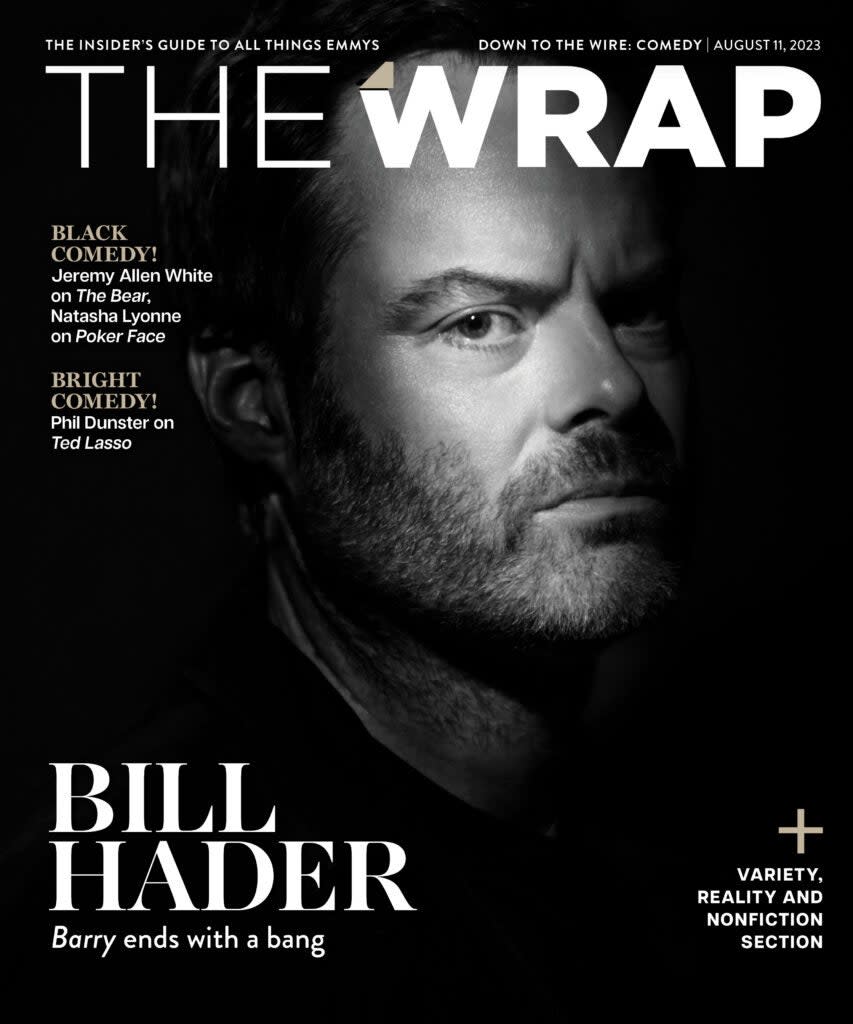What Lena Waithe Learned From Mary Tyler Moore: ‘I Was Inspired to Write Timeless Television’
A version of this story about Lena Waithe and “Being Mary Tyler Moore” first appeared in the Down to the Wire: Comedy/Variety/Reality/Nonfiction issue of TheWrap’s awards magazine.
You’d expect people like James L. Brooks and Rob Reiner to be involved in a documentary about actress and producer Mary Tyler Moore, a TV pioneer who died in 2017 at the age of 80 — and they are part of the HBO documentary “Being Mary Tyler Moore.” But so are Lena Waithe, the Emmy-winning writer, producer and actress whose work includes the TV series “The Chi” and “Master of None” and the films “Queen & Slim” and “The Forty-Year-Old Version,” and Rishi Rajani, the CEO of Waithe’s Hillman Grad Productions.
Neither of them was born when “The Mary Tyler Moore Show” went off the air in 1977, and Rajani knew virtually nothing of Moore when Waithe signed on to produce the documentary, which was directed by James Adolphus.
You’re much too young to have seen “The Dick Van Dyke Show” and “The Mary Tyler Moore Show”when they were first on TV. How did she come to have an impact on you?
LENA WAITHE Nick at Nite. I watched Nickelodeon pretty much every day, but I would stay up late and it would turn into Nick at Nite, where I would get to see old TV shows. I watched “The Dick Van Dyke Show” a ton and was enamored by it. And as I got older and started to study television, I was told that “The Mary Tyler Moore Show” was a show I should watch if I wanted to be a television writer in the half-hour space.
I majored in television writing at Columbia College (Chicago), and what was fascinating to me was the fact that this woman existed in these two very interesting universes and really defined for a generation what a woman was supposed to be.
My brain wanted to know who that person was. What was her DNA? I read her memoir, “After All,” and became fascinated by her because she was such a reserved, mysterious person. I just loved her work, and obviously going into half-hour comedy, she’s someone you have to be aware of no matter what age you are.
I was inspired to write timeless television because that’s what “The Dick Van Dyke Show” and “The Mary Tyler Moore Show” represent to me. I learned by watching those shows that you don’t have to rush a punchline. Sometimes I want to get that satisfaction right away, but I learned to be patient with jokes and allow the characters to be the source of comedy rather than them being pulled by it.

Rishi, how did you come to appreciate her?
RISHI RAJANI A lot of what I learned about Mary Tyler Moore was actually in the process of this. When I started at HIllman Grad, THEY already had this project in development over here, and I got to dive in and learn things as the team was learning things. I was able to discover how incredible Mary Tyler Moore was as a person, and her strength and her creativity and everything she brought to the screen, but also how massively impactful and influential she was. I saw it in Lena, but also in the context of all the interviews that we did – we saw how much people were inspired by Mary, how much something like her wearing pants on TV meant to people. It was a tremendous learning moment for me, not just about Mary but about American television and cinematic history overall.
Lena, how did your appreciation for Mary turn into making a documentary about her?
WAITHE In an interview about my influences and what I wanted to do next, I mentioned Mary Tyler Moore and said something about possibly writing a biopic. That just sort of put it out into the universe. And then Dr. Robert Levine (Moore’s husband for the last 34 years of her life) got word of that article and was intrigued by it. He was kind enough to reach out and invite me to their estate in Connecticut. I went and I was blown away, and Robert and I instantly connected.
I walked away really inspired and moved. I wanted everybody to come into this house and to see her desk and to see her manuscripts and to see the mural of her and who she was. He really responded to that, and we were off to the races.
What were the keys for you going into this documentary?
WAITHE I think for me, when Mary died, it was with very little fanfare or acknowledgement. And I wanted people to walk away and understand why she is one of the pillars of great comedy and television. But I also wanted people to understand the woman, the person, the human who became a giant because of her smile and because of her effervescent energy. I’m fascinated with lives and personas. I think people got a sense of the person and the persona in a documentary. I know that’s a bit of a lofty goal (LAUGHS), but it was something I really wanted to to tackle, because it’s something I think about a lot, especially in our society. There are a lot of people with personas and personas that sometimes take over those people. And I think it happens to all of us. We sometimes think it only happens to public people, but if you think about most humans, there’s a person at home and there’s a persona when we walk out the door.
The film keeps asking the question, “How close was Mary Tyler Moore to her characters, Mary Richards and Laura Petrie?” And we get different answers depending on where we are in her life.
WAITHE Right? Sometimes that can be frustrating about a subject. You try to nail it down and say, “Well, which is it?” But I think what’s so great about it is that she was interviewed a ton over the course of her life, and with each interview, she’s in a different space in her life.
We start the documentary with a very youthful Mary, and she is sharp as a knife as she sits there with an interviewer (David Susskind) who is belittling her and not respecting her, and she handles him with grace and kindness. And by the end of the documentary she’s lost a son and is at a different place in her life. And her perception of Laura Petrie and Mary Richards changes. That’s why I think the answers are a little contradictory.
RISHI RAJANI That’s my favorite part of this documentary. To see her playing a character on screen that was so empowering, this woman embracing her own strength, her own power, and then maybe not having those things in her own life. But then to find that power and strength later on and embrace it. It’s a really cool full-circle moment for her as a human being.
As you made this deep dive into all things Mary, were there any revelations that stand out?
WAITHE For me, I found a lot of newness in some of these interviews that I hadn’t seen. Such as when she’s asked about the death of her son and her not being able to reconcile that. Like, she would probably never be able to make sense of that. And I don’t think I ever really understood that. I thought she grieved and she was able to understand it, but she didn’t. I was really happy we have that footage because I think it’s one of the most significant moments in her life.
RAJANI For me, it’s all been in the audience reaction. I grew up in London watching British TV, so I did not know Mary Tyler Moore in any way, shape or form. I was able to embrace the love of Mary through Lena and through the filmmaking process. But then you see the amount of people that come up to us after screenings, from artists and people that work in Hollywood to people outside of Hollywood, you realize it was a massively impactful, influential show. To see the ripple effect has been the most beautiful revelation that I’ve gotten to witness.
Read more from the Down to the Wire: Comedy/Variety/Reality/Nonfiction issue here.

The post What Lena Waithe Learned From Mary Tyler Moore: ‘I Was Inspired to Write Timeless Television’ appeared first on TheWrap.


